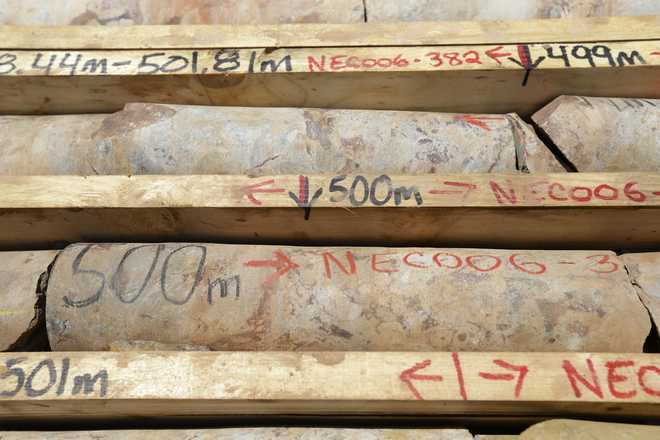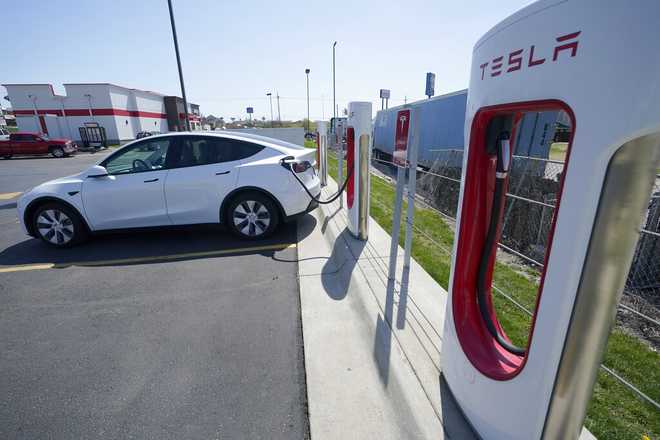May 27, 2021
Channel 7 KETV News Story
ELK CREEK, Neb. — There’s been talk of a mine in southeast Nebraska for decades. The project has promised riches and jobs and property tax relief — all things that have yet to materialize.
But the current company at the helm says that’s about to change. What’s different this time?
 “We went from being renters of the land to being owners of the land, and that’s a big milestone in project development,” said Scott Honan, NioCorp chief operating officer.
“We went from being renters of the land to being owners of the land, and that’s a big milestone in project development,” said Scott Honan, NioCorp chief operating officer.
In late April, the Colorado-based company bought two parcels of land in Elk Creek. The 226 acres south of Tecumseh cost $6.2 million, according to Securities and Exchange Commission filings.
NioCorp is after a carbonatite, buried 500 to 600 feet under the dirt. It likely formed half a billion years ago during a magmatic event.
“That’s an exciting thing if you’re a geologist because carbonatites host all kinds of interesting mineral resources,” Honan explained.
Niobium is a steel additive. It makes the metal lighter and stronger, which has applications for construction and infrastructure. But it’s also used in a new generation of electric vehicle batteries that can charge in a fraction of the time of current lithium-ion batteries, making them more attractive to car buyers.

Soil samples containing niobium extracted from the depths at a proposed mine site near Elk Creek, Neb., are seen Wednesday, June 11, 2014.”
You buy an electric car, and instead of having to charge it overnight, you can stop just like you stop at the gas station and charge it in a matter of minutes,” said Honan of the technology.
Scandium does the same thing for aluminum that niobium does for steel. It can make aircraft lighter and stronger, which means the jet engines burn less fuel. Air travel accounts for around 2% of global carbon emissions, according to the Air Transport Action Group.
There’s also potential use in fuel cell technology.
“They’re looking at putting this technology into ships, put a big fuel cell in there and power the ship with that instead of a diesel engine,” Honan said.
Pulling these resources out of the ground could be a game-changer as the U.S. pushes to bring critical mineral supply chains onshore. There are no current U.S. niobium or scandium mines.
But NioCorp thinks there’s ‘rare earth’ in the Nebraska rock too. And that has national security implications.
“We are dependent now heavily on these supplies from China and other countries,” explained Sarma Pisupati, a Penn State University researcher.
China controls more than 80% of the rare earth element market, according to the U.S. Geological Survey.
The metals are used in all kinds of electronics, from cell phones and computers to lasers and wind turbines.
“Some of these rare earth elements are used heavily in the defense industry,” he said. “We need to develop the entire supply chain here.”
According to the Pentagon, there are about 920 pounds of rare earth metals in each F-35 stealth fighter jet.
The issue is urgent, Pisupati says.
“There is no time to play any games,” he said of policymakers. “We all need to act and get a plan together for the security of our country.”
Sen. Ben Sasse, R-Neb., who during his time in Congress has aggressively sounded the alarm on the rise of China, agrees.
“Our policy leaders need to be spending a lot of time building answers to what the world looks like in 10, 30, and 50 years,” Sasse said in a statement to KETV NewsWatch 7. “Part of that conversation needs to be about ensuring economic and supply chain independence in the tech and national security sectors.”
While policymakers and investors are focused on what will come out of the ground in Nebraska, the people living near the mine are more concerned with what might come in.
“It would change the game,” said Doug Goracke, who’s worked for the City of Tecumseh for more than 30 years. “You can’t even put an idea of how big this would be for us.”
Goracke said the mine will bring good-paying jobs to the area, along with an infusion of cash that local government can use to relieve the property tax burden of other landowners.
“We were always talking percentages before, us locals,” said Greg Krueger, who’s lived in the area for more than 60 years. “Is it going to happen, is it not?”
Kruger says the difference this time is that NioCorp bought the land, and the market is demanding more of the metals in the ground for clean technology.
“So now we’re really positive,” he said. “It looks like it’s going to be hard to stop.”
It’s a sentiment shared by Lavon Heidemann, a Pawnee County Commissioner who was part of the first drill crew that tested the land in 1978.
“It’s come a long ways, you can feel it,” he said.
The former Nebraska lieutenant governor knows the project might ruffle a few feathers as it gets up and running.
“It is going to change what it looks like around here and everybody — they don’t like change, especially people in this area, they don’t like change,” Heidemann said.
And as for any environmental concerns?
“I have a lot of faith in the government entities that are going to have oversight on this,” he said. “These people are going to do it right.”
While NioCorp executives say they have secured approval for major permits on the project, there’s still the matter of raising the money to start the work. The company estimates $1 billion of capital expenses to get the mine operational. It would process the niobium, scandium, titanium and possibly rare earth metals on-site into finished products and then ship them to buyers.
Honan estimates 1,000 jobs on the site during peak construction, which would last about three years. The lowest-paid worker on the site would earn at least $20 an hour, with many making substantially more, he said. More than 400 jobs would remain after construction to operate the mine.
Honan is hopeful now that the company purchased the land, it can raise a substantial amount of what it needs to start the work by the end of the year.
# # #



